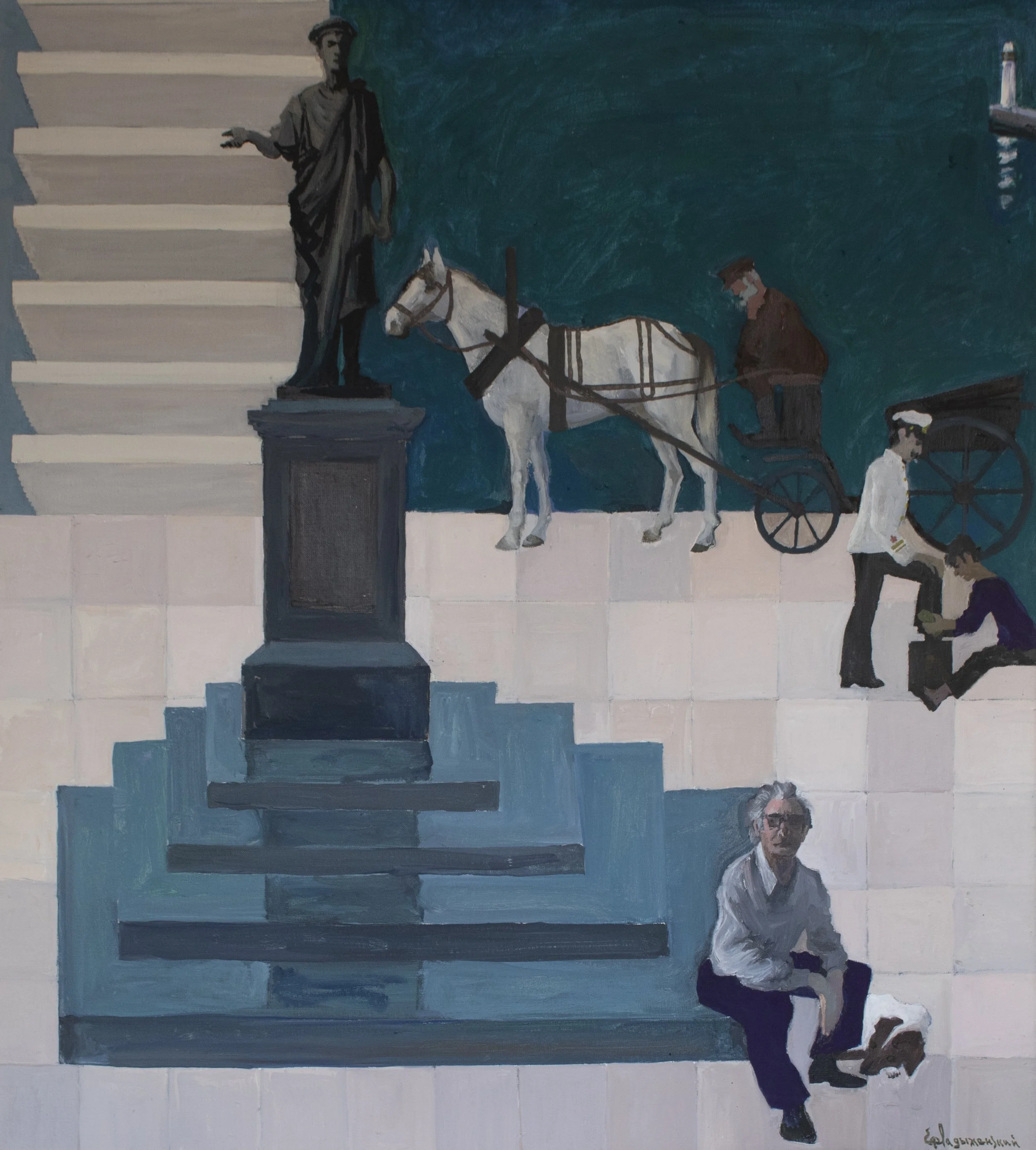Most of the work in this exhibition is drawn from Ladyzhensky’s extensive Growing Up in Odessa series. What motivated Yefim Ladyzhensky to paint so many scenes from his youth in Odessa? He says, “When I walk into my studio these days, I am overwhelmed by feelings of despair. I’m drowning in the pointlessness of my actions.” Ladyzhensky feels compelled to destroy his work, but finds “the will to resist this restless world that is so heartless towards a creator.”
His The Past is Always with Me triptych is not part of his Odessa series, but provides critical context for understanding the emotional anguish that drove its creation. These paintings are in sharp contrast to Ladyzhensky’s many lively, childlike, and light-hearted scenes. The Odessa series came not only from his deep longings and fondness for the city, but also an acute inner turmoil and outright disgust for the culture and art he encountered in Israel after he emigrated in 1978.
In a 1979 article Ladyzhensky published in Russian in the Israeli magazine 22, he laments the character of the Jewish people he met in Israel, complaining, “here in Israel, I don’t see the Jews I knew and loved.” He describes the work of Israeli artists as “influenced by the mercantile side” and by trends in Europe, and “alien to the Jewish spirit.” Two of the paintings in this triptych, like many of his late self-portraits, foretold his suicide by hanging in 1982.


